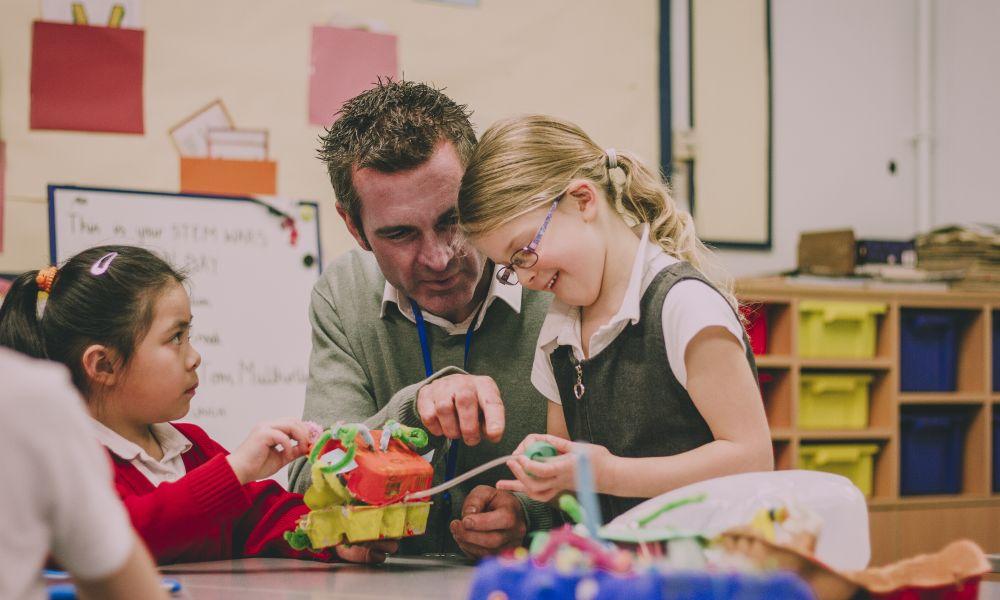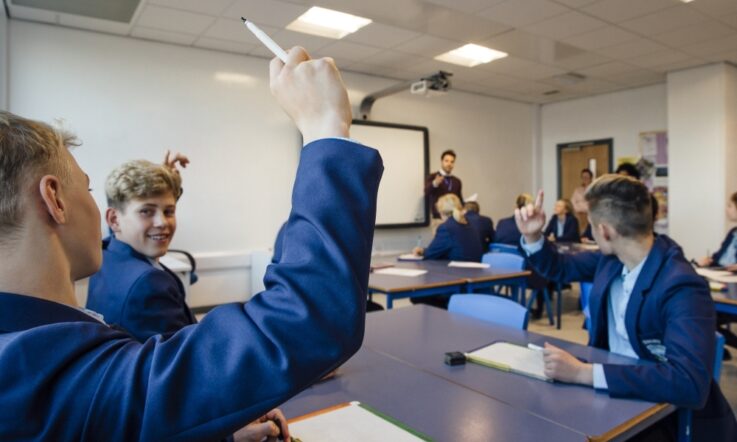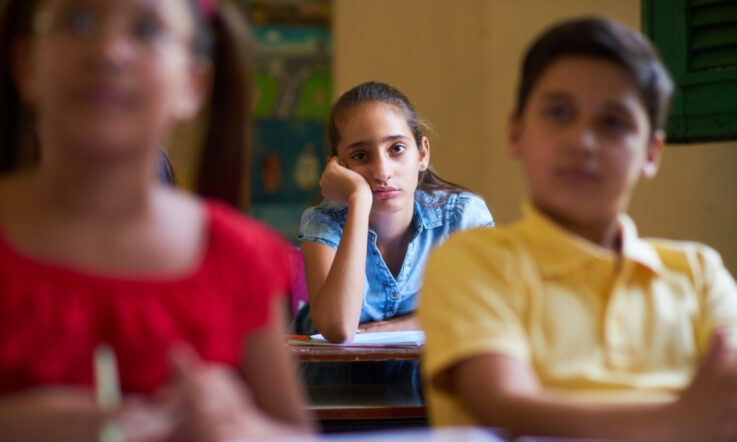As teachers work to address student learning needs, student engagement emerges as a key consideration for effective practice. Understanding how to effectively support each student to be intellectually, behaviourally, emotionally and socially engaged as learners can be challenging.
Amidst the busyness of a teaching day, it is rare for teachers to be supported with focused time and external support to explore this aspect of their teaching. Yet this is exactly what 6 teachers from St Joseph’s Primary School in Hawthorn, Victoria, were enabled to do by their school leadership.
Regular meetings were scheduled with the school’s Multi Domain Student Engagement Leader and once a term these teachers also engaged with an experienced academic researcher from a local university who worked as their critical friend. The teachers were encouraged to critically explore their teaching practice and use their classroom as a rich context for evidenced-based research about the conditions required to enhance student engagement. For all involved, this inquiry became a rich professional learning experience.
In this article, 3 teachers, working at the senior primary levels, share how this opportunity changed the way they thought about student learning. They explain how they began to plan, teach and interact with their students in different ways.
Student engagement requires reflection in and on practice
Megan Gilmour (a year 5 teacher) describes how the intention of student engagement required her to search for a more flexible and responsive teaching approach.
Two years ago, we started on a journey to understand more about student engagement and what this looks like within a classroom environment. While I used to gain valuable insights about my students by taking time to reflect on my teaching after classroom sessions, I realised I needed a more dynamic approach.
My goal was to make better teaching adjustments in the moment, to more flexibly respond to situations and student reactions. To do so, I needed to be reflective not only on my teaching but also in my teaching. This required me to notice what my students were doing and also what was driving their personal experience of learning. This realisation challenged the way I planned and how I interacted with my students; ultimately this thinking changed my teaching practice.
Catering for learning as a total experience is now right at the forefront of how I work with my class. I used to teach what was on the plan and ‘tick off’ what I had taught. Now I utilise greater flexibility when teaching, adapting my practice more effectively. Not only do I observe how the students are working with and understanding content, but I am more actively noticing and responding to who they are in the learning experience and how we are all working together. I have a greater awareness of my students’ learning needs and I act more confidently on my teacher judgment, addressing wider teaching considerations.
As a result of our collective discussions and research, I am better able to ensure the students are more consistently involved and actively engaged in their learning because I foster a more vigorous and interactive classroom environment. I have witnessed significant change, growth, and development, not only in my students, but also in the ways I think about and enact my teaching.
A shared responsibility between teacher and student
Mieke Lochrie (a year 5 teacher) explains how she grappled with a long-held assumption that student engagement was ultimately her responsibility as the teacher. Yet she saw a need for students to take ownership of their learning and through her research focused on building student agency. As a result of her work, her students were able to make decisions about how their engagement with learning could be improved.
I used to think that, as a teacher, I needed to develop new tricks, new learning and ‘out of the ballpark’ activities to keep students engaged. Yet learning is an interactive process, and this led me to consider how my students could become more responsible for their personal learning.
I needed to capture their thoughts about how they were experiencing learning. My goal was to create opportunities where students could voice their opinions and describe their individual levels of engagement during different lessons throughout the week.
I designed a continuum which enabled them to indicate how engaged they felt with a learning task. Students indicated their response by choosing options ranging from disengaged to fully engaged, with slightly different options also available between each extreme. They then described why they felt this way.
Three key areas emerged in their responses: relationships, including working partners; passions and interests; and task complexity, relating to the degree of challenge the task presented.
This information gave me some insight about areas I needed to prioritise and explicitly teach my students so they could overcome their disengagement when faced with conditions that were not optimal. For example, as many were disengaged when working in a group when their ideas were not chosen, I began to place an emphasis on teaching collaboration skills, such as compromise and building on each other's strengths.
I also realised I needed to open different conversations with my students to increase their awareness that sometimes we find ourselves in situations that are not our optimal learning environments. I posed the question: How could we manage ourselves during these times? Helping them to identify their responsibility in these situations, included encouraging them to make better choices about who they worked with.
We also discussed taking responsibility to optimise their capacity for effective self-management, by making decisions to ensure they have enough sleep and feel rested when coming to school each day.
Regular reflection and class discussions about how to manage personal levels of engagement are now the norm in our classroom. Students understand the areas of responsibility they can action through their own decision making.
Building personal capacity to more effectively deal with feedback
In this final section Bek Iezzi (a year 6 teacher) explains how understanding student engagement as a shared responsibility between teacher and student, increased her personal confidence to accept feedback and more effectively lead conversations with parents about their child’s learning.
Asking for student feedback was often something I found daunting even when I tried not to take feedback too personally. However, this is slowly changing as I now realise the importance of students being active participants in their own engagement.
I also know our school supports us in creating conditions which promote student agency. This has enabled me to feel more confident having difficult conversations with parents about their child’s learning needs.
Recently, I met with a student and their parents to explore how the student was feeling about school. In the meeting, the student said, ‘I’m bored’. In the past, this comment would have been a trigger making me feel a mixture of responses. I would have felt uncomfortable, undervalued and deflated. Yet having explored student engagement in our work together as a team, I felt empowered to talk more confidently about this feedback.
I knew because of my work in this project, that I had been explicitly working to create conditions in my teaching which promoted and enhanced student engagement. I had explicitly considered each student’s learning needs, while also attending to curriculum demands. This work had also highlighted for me that engagement was not just about teachers, the student also had a responsibility to actively attempt to ‘buy into’ the learning opportunities I was providing.
As we continued the conversation, I was not shy in sharing my views with the student and their parents about our school’s expectations of learning. I explained how learning and engagement was an interactive process. The conversation shifted to one where collaboration and agency became critical considerations for moving forward.
Stay tuned: In tomorrow’s article, teachers working at the Foundation level explain what they learned about student engagement from researching their practice. They describe how student voice became central to their work, along with opportunities for student decision making.
As a teacher, how often do you critically reflect on your own classroom practice?
As a school leader, what opportunities do you provide for teachers to reflect on their own practice in a group, or with the support of an external expert?



